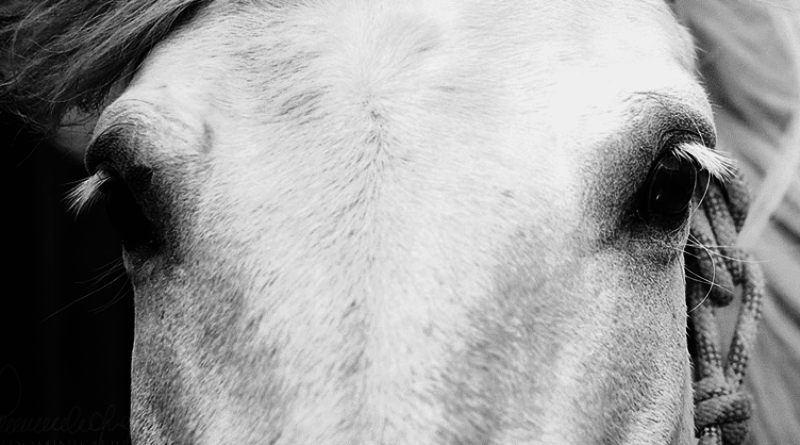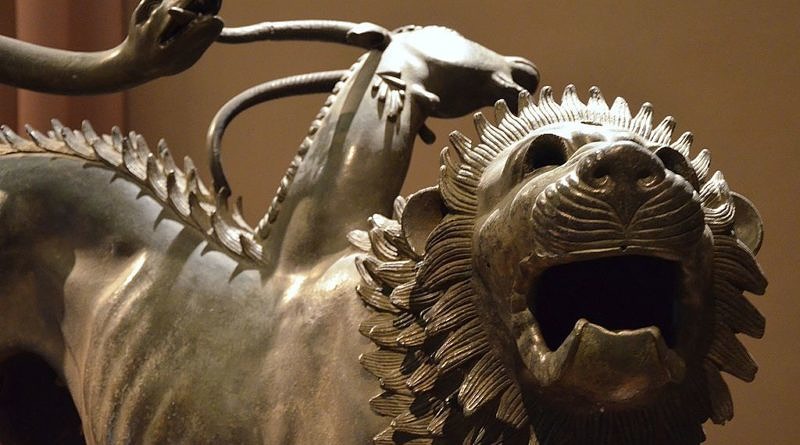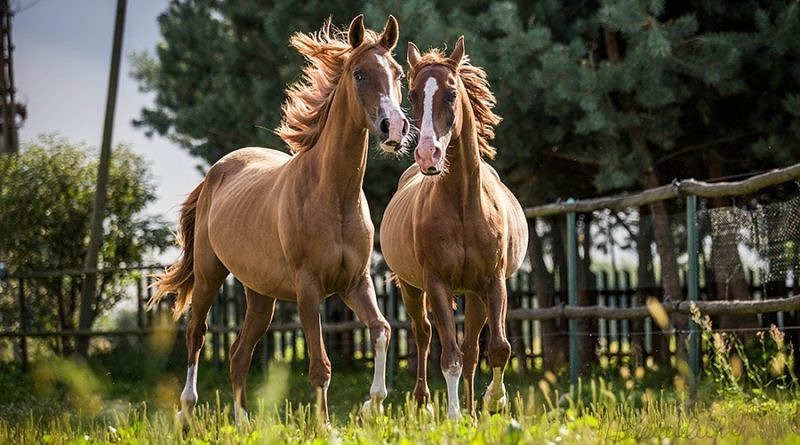In-depth Genetics: Shades of Grey
Calling a ‘white’ horse “grey” is not just a way for us horsey folks to show off! Find out why horses go grey and the link between colour and cancer.
Calling a seemingly white horse ‘grey’ may come across as simply a way for us horsey folks to show off! But there is a reason behind this awkward terminology and that reason relates to some surprising effects of this colour trait.
Can you describe a ‘grey’ horse?
People use lots of terms to describe their horse’s specific shade of grey. They might say their horse is a “steel grey”, “rose grey”, “dapple grey”, “fleabitten” and so forth. In reality, all of these terms refer to the same genetic phenomenon.
Unlike true white horses, grey horses are not born with white coats, instead they gradually lose their birth colour – they ‘grey out’ with age. Their birth colour is a reflection of the horse’s underlying, genetically determined, colour – bay, chestnut, palomino etc. Depending on this ‘base’ colour of the horse, the skin is usually dark, typically black. True white horses have pink skin from birth.
And this is where the term ‘grey’ comes from! Since many grey horses have a dark ‘base’ colour they have dark skin. After they grey out the combination of the white hairs against the dark skin gives a grey tone to their colouring that is absent in true white horses with their pink skin. (Although somewhat confusingly greys can also have pink skin if the horse is genetically a cremello or other dilute, or in areas with white markings.)
In addition, non-grey horses are born with light highlights in their coat (lower legs and underside). Grey horses lack these lighter areas and their darker colouring is referred to as ‘hyperpigmentation’. This can develop further before the horse begins to grey out fully, with some horses turning very dark before they go grey. This can make it very difficult to tell what a horse’s ‘base’ colour is if it is destined to grey. For instance, some genetically chestnut horses turn almost completely black before they grey out!
As greys age white hairs begin to appear interspersed with their body colour, causing their colour to lighten. Dapples and different shades of grey are all simply stages of this process and a grey horse will change appearance over time until it is almost entirely white.

Greying with age
The process that leads to greying in grey horses is best thought of as equivalent to why our own hair goes grey with age, or indeed why older horses and other mammals will develop some grey hairs as they get older.
In humans and horses alike, hairs do not grow forever but instead are regularly replaced. In the case of human hair, each hair grows for between one and three years before it is fully shed and replaced. Every time a hair grows, new pigment cells need to be produced to colour the hair.
These pigment cells proliferate from precursor cells that differentiate into pigment cells when required. But we don’t have unlimited supplies. As we age, we simply ‘run out’ of pigment cells, leaving our hair a paler shade, and eventually white.
Horses without the grey gene go through this same process and begin to lose pigment in their hair with age. But horses with the grey gene have a surprising mutation that speeds up this process dramatically and also produces some side-effects.
The mechanism
Grey horses actually have a duplication of a part of their genome which leads to an overabundance of pigment cells – there are both more of them and they proliferate more rapidly. This is the reason young grey horses are so dark or ‘hyperpigmented’ rather than having typical foal coats. And because greying is the result of the depletion of the precursors of pigment cells, having to produce so many so quickly is the cause of early graying. Grey horses literally ‘run out’ of pigment cells early.
Strange as it sounds, this means that greys end up white because they produce too much pigment, not because they produce too little.
This also explains why horses with two copies of this modified gene (homozygous GG horses) tend to grey quicker and end up fully white, whereas horses with only one copy take a little longer as they are not using up cells quite so quickly.
Melanomas
One of the side effects of this process is that horses with the grey gene are more likely to develop melanomas and the risk is increased for horses with two copies of the gene. We don’t know exactly why this is but some speculate that it might be due to the increased rate of cell proliferation which increases the risk of a cancerous mutation occurring in pigment cell lines.
Depigmentation and vitiligo, which are also associated with greying, are probably the body’s autoimmune response to this same overproliferation of cells.
Selective Breeding
We now know that grey is a trait that was specifically selected for by humans (as opposed to a trait that already existed among wild herds) so it is interesting that this link was missed or that humans chose to breed for appearance over health in this instance. Thankfully, the majority of melanomas are not cause for too much concern.
Today a great many breeds are almost exclusively grey because of the overriding nature of the gene. Grey ‘covers’ all other colours with the exception of white markings (since pigment is already absent where there are white patches). A horse that is grey with one non-grey parent always stands a 50-50 chance of producing a grey foal as it is necessarily heterozygous for the trait. A horse that is homozygous will always produce greys no matter the horse it is paired with.

All of this means that grey is one of the most surprising horse colors – the greying process is unpredictable and can produce a beautiful range of colours during a horse’s life. And next time you see that ‘boring’ old grey gelding in the field on the way to work, remember that he may have started life as a silver buckskin appaloosa!








Pingback: Grey Horses: 15 Things You Should Know – Xtra:Pets
Pingback: Grey Horses: 15 Things You Should Know – XtraPets.com